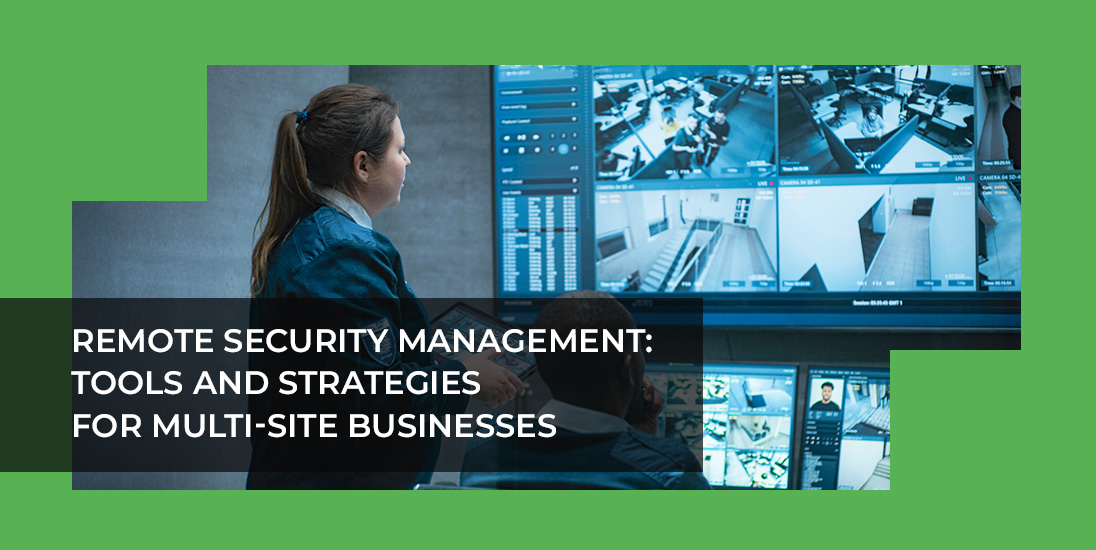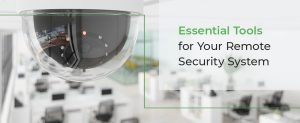Remote Security Management: Tools and Strategies for Multi-Site Businesses

Expanding across multiple locations brings fresh growth and a wider footprint, along with a more complex security picture. Teams need to juggle varied buildings, systems and people, which creates pressure for speed, visibility and consistent standards. Modern platforms offer a centralized approach that consolidates every site into a cohesive view.
Learn more about the key challenges of remote security management for multi-site businesses, plus the essential tools you need and practical strategies to secure your properties.
What Is Remote Security Management?
Remote security management for multi-site businesses blends on-site devices — video cameras, access control systems, alarms and sensors — with cloud services, analytics and off-site monitoring to create a single command experience. Operators can use a web dashboard or mobile app to perform various tasks, such as:
- Viewing cameras
- Managing credentials
- Receiving alerts
- Coordinating responses
Remote security management tools and strategies for multi-site businesses create a scalable security framework that aligns with organizational priorities. Cloud-first design supports rapid deployment, secure connectivity and real-time visibility across the organization, all from a single point of contact.
Key Challenges of Multi-Site Security
A decentralized model across many locations often produces friction. Leaders want a complete view, repeatable standards and efficient staffing, while frontline teams seek clear playbooks and tools that speed action. The following challenges emerge most frequently.
Inconsistent Security Protocols
When each site selects its own security infrastructure, teams may face gaps in training, compliance and investigations. Different badge rules, camera placements or alarm priorities create uneven protection and confusion during incidents. Auditors and managers may have to spend extra time harmonizing reports and reconciling data. A consistent approach across locations elevates performance, improves accountability and streamlines onboarding for new employees and contractors.
Lack of Centralized Oversight
Siloed systems limit visibility to a single site or region at a time, which complicates situational awareness. Leaders rely on up-to-date information to assemble the full picture of incidents, but cross-referencing separate logs can hamper investigations. With remote security management, centralized dashboards, common alerting and shared reporting accelerate decision-making, enabling coordinated responses and building a shared understanding of risk across the organization.
Inefficient Resource Allocation
Staffing every location with on-site guards or dispatching technicians for site-specific services can increase security costs. If travel time, after-hours coverage and repeat visits for simple fixes strain your budget, your business can benefit from remote security. This approach frees skilled teams to focus on higher-value work, while virtual patrols and event-based monitoring concentrate attention where it matters most.
Essential Tools for Your Remote Security System
A strong remote security foundation brings key technologies together under one pane of glass. Each component delivers value on its own and the combination multiplies impact for multi-site operations.

Cloud-Based Video Surveillance
Cloud-connected cameras transmit live and recorded footage to a secure platform, allowing for easy viewing from any device and seamless management at scale. Teams access all locations in one place, quickly pivot between sites and share links for investigations. Artificial intelligence (AI) analytics can perform appearance searches, people counting and intrusion notifications to enhance multi-site business security.
Centralized Access Control Systems
A unified access control platform empowers administrators to grant, adjust or revoke credentials for any location in moments. Access control devices your business might adopt include:
- Keycards
- Key fobs
- Mobile credentials
- Personal identification numbers (PINs)
- Biometric data
Further security measures, like schedules, door groups and role-based permissions, maintain consistent rules across all sites. Automatic deprovisioning during offboarding means employees who leave the company immediately lose their access. Visitor workflows and detailed audit trails enhance compliance and mitigate risks associated with vendor access.
Integrated Alarm and Sensor Systems
Intrusion alarms, smoke and carbon monoxide sensors, water leak detectors and environmental monitors all route into a centralized dashboard or monitoring center. Unified alerting, escalation paths and response playbooks reduce confusion and create predictable outcomes. When specific sensor events occur, an automated system can quickly trigger actions such as locking doors, turning on lights or launching video bookmarks.
Unified Management Platforms
With remote security management, a single platform ties cameras, access control, alarms and analytics together for full administrator control. Application programming interfaces (APIs) allow your security system to communicate and connect with different tools, such as:
- Human resources information systems (HRIS)
- IT ticketing
- Identity providers
- Incident management tools
These tools transform security from a stand-alone function into a connected business system. A unified dashboard can show data on device health, software updates and user permissions, while allowing reporting from one interface on a phone or computer.
Strategies for Effective Multi-Site Management
The following strategies help leaders create a durable program that scales confidently across locations and teams.
Conduct a Comprehensive Risk Assessment
To develop a sustainable security management strategy for multi-site businesses, begin with site-by-site evaluations that map assets and personnel flows, taking into account operational priorities. Administrators should take into account incident history, local conditions and stakeholder interviews to identify realistic scenarios and how they impact the business. This baseline guides investment, informs camera and sensor placement and shapes response plans tailored to each facility’s profile.
Standardize Your Security Policies
Consistent rules reduce ambiguity and improve cross-site collaboration during investigations. Your business should create a unified set of policies for:
- Credential issuance
- Visitor management
- Camera retention
- Alarm handling
- After-hours access
Clear, accessible documentation and periodic refreshers encourage adoption and keep practices aligned with evolving business goals.
Implement a Layered Security Approach
A layered security approach blends physical barriers, smart technology and professional monitoring across perimeter, entry and interior zones. Tools for this approach include:
- Fences and lighting to act as a deterrent.
- Access control and intercom systems to validate each visitor’s identity.
- Cameras with analytics to provide verification and context.
Monitoring partners and well-rehearsed playbooks close the loop, enabling swift action and strong outcomes in both routine and high-stakes events.
Plan for Scalability
Select solutions that expand smoothly as new sites come online. Modular hardware, cloud-native licensing and open integrations accelerate rollouts and reduce complexity. Standardized device profiles, templated permissions and repeatable onboarding checklists keep deployments consistent and maintainable across the entire portfolio.
Partner With Security Monster for Centralized Control
Security Monster delivers a cohesive platform that aligns with the core principles of commercial security, including station monitoring, mobile access control and advanced AI video analytics. Our team of experts will design careful camera coverage, credential schemes and alarm workflows that fit each of your site’s risk profiles while preserving enterprise consistency.
You will enjoy a single point of contact, proactive system health checks and responsive support that accelerates resolution and maximizes uptime. Security Monster scales across locations with a predictable playbook, comprehensive training and ongoing optimization.
Connect with the Security Monster team for a consultation and a tailored multi-site security blueprint that delivers confidence, continuity and measurable results.

